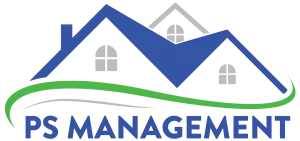So you just bought a new home or condo in a great neighborhood and you’re super excited about it. You got your set of keys, garage door opener, mail box key, and huge stack of paperwork. You know that the stack or paperwork is probably important, but of course like most new owners, you are so excited about your purchase that the documentation gets thrown into a drawer somewhere during the moving process.

That big stack of paperwork should have contained your HOA or condo association governing documents. These documents contain the “Laws of the land” as we like to call it. They are made up of several sections of information that pertain to your specific community. We wanted to break down the basic elements of these governing documents to help all owners understand what exactly they are looking at.
HOA | Declaration
This is what we refer to as the “meat and potatoes” of the documents.The Declaration is called many various names such as “master deed” or “CC&R’s” which is the short for covenants, conditions, and restrictions for the association. This document explains an owner’s obligations to the association. These responsibilities can include payment of dues and assessments, minimum maintenance and improvement upkeep, as well as the association’s expectations and requirements to the owners. This also contains a majority of the major “do’s and do not’s” for the community. This is typically the longest portion of the entire document package. It is common viewed as somewhat of a ‘constitution’ of the association. The declarant is the person or group of people who either signs the original declaration governing the development and association or acquires the original developer’s rights to the association.
HOA | Bylaws
These are basically guidelines for how the association should operate. This section should clearly lay out information like a board member’s term length, voting percentages needed to approve or disapprove new community amendments, and other governing guidelines for the association. Bylaws generally set forth definitions of offices and committees involved with the Board of Directors. Even if you aren’t currently on your HOA board of directors or on a community committee, it is still important to know and understand the positions and under what authority they are operating under.
HOA | Amendments
These of course are any formal changes that have been made to either the Bylaws or the Declaration. Communities over time discover real life situations which my call for changes to the governing documents. Rules regarding how to go about creating an amendment to your bylaws or declaration vary within each community. Some of these changes can be very difficult because of the required number of community votes it requires to execute the proposed changes. It ‘s not easy achieving a 66% vote of an HOA community of 500. Organization and education is the key to successfully making any significant changes to the community governing documents.
HOA | What To Do?
Community Rules and Policies – Many associations have additional written rules and policies that are separate of the Declaration and Bylaws. These can be specific rules regarding landscaping, parking, pool , and other areas. Many times these rules are necessary because the community’s declaration wasn’t specific enough regarding a certain subject. It is also advised that HOA and condo associations have specific collection, fine, and enforcement policies written and recorded as well. These policies help inform all residents about specific topics regarding HOA assessment payments, fines for maintenance upkeep or other declaration infractions.
Budget / Financial Information – If your new home is in a condominium association, reviewing and understanding the association’s financial health might be the most important part of the documentation. Although they tend to be much smaller than HOA subdivisions, condo associations are usually responsible for much more exterior and ground maintenance. Before purchasing a unit within a condominium community, you’ll want to review the current financial situation of the association. Associations that are weak financially add additional risk and potential future costs to any owners in the condominium community. Be sure you fully understand the financials for your association.

Topic: HOA

